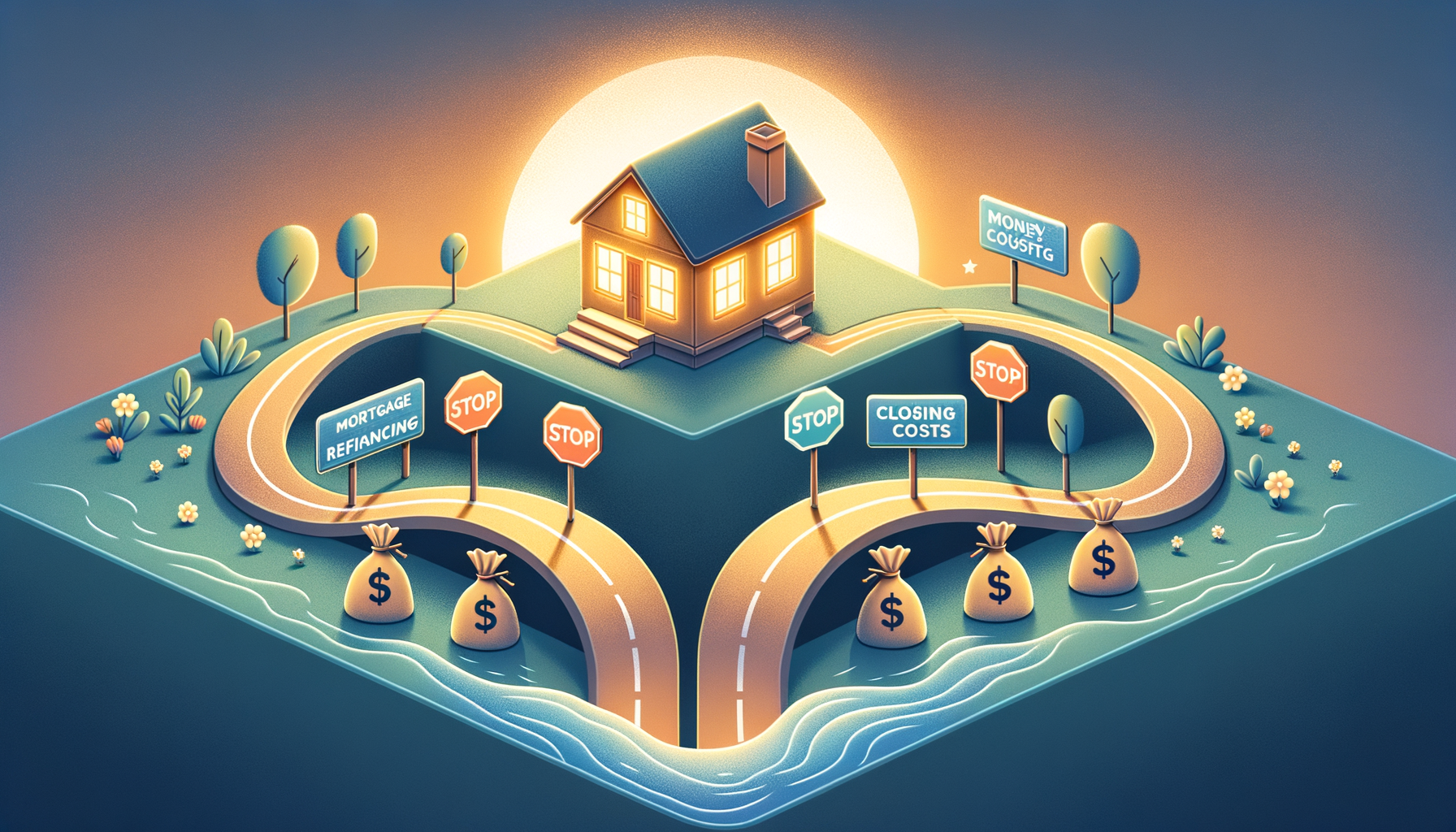“Maximizing Your Profit: A Guide to No-Closing-Cost Refinancing”
Refinancing your mortgage is a popular tactic for homeowners to decrease their monthly payments, shorten their loan term, or switch from an adjustable-rate mortgage to a fixed-rate mortgage. Essentially, a refinance works by taking out a new mortgage to pay off your existing loan. A less well-known alternative is a no-closing-cost refinance. But, like any financial decision, it is essential to thoroughly consider all possibilities before opting for a no-closing-cost refinance.
Understanding No-Closing-Cost Refinance
No-closing-cost refinance may seem like an attractive offer due to the absence of upfront fees. Closing costs, which include expenses like title insurance, appraisal, and loan origination fees, typically range from 2% to 5% of the total loan value. By foregoing these costs, borrowers can start saving money on their mortgage payments much sooner. But it’s important to remember that these costs don’t just disappear.
In a standard refinance, you would pay the closing costs upfront when the loan is closed. With a no-closing-cost refinance, these costs are either added to your loan amount or your interest rate is raised to compensate for them. This results in a larger loan or a higher monthly payment.
Who Can Benefit From a No-Closing-Cost Refinance?
A no-closing-cost refinance can be a suitable option for various scenarios. Here are a few situations where it might be beneficial:
– Short-term plans: If you plan to sell your home in the near future, a no-closing-cost refinance could save you money. You would benefit from lower monthly payments without staying in your home long enough for the increased interest costs to outweigh the closing cost savings.
– Cash-strapped homeowners: If you can significantly lower your interest rate but lack the funds for closing costs, this option could be beneficial. However, it’s essential to determine whether the long-term costs will outweigh the immediate savings.
– Expectation of lowered rates: If you believe that interest rates will continue to decline, a no-closing-cost refinance could make sense. You could use it as a temporary solution before refinancing again when rates decrease further.
– Debt consolidation: If you intend to consolidate high-interest debt into your mortgage, a no-closing-cost refinance could be a good move.
When is a No-Closing-Cost Refinance a Bad Idea?
While a no-closing-cost refinance can be beneficial, it isn’t always the best choice. There are several reasons where you might want to consider alternatives:
– Long-term plans: If you plan to stay in your home for many years, paying closing costs upfront would be more cost-effective. Over time, the increase in interest costs from the no-closing-cost refinance would surpass the savings.
– Frequent refinancing: If you tend to refinance frequently, a no-closing-cost refinance might not be the best choice. The added closing costs may negate any benefits from lower interest rates.
– Lower monthly payments: If reducing your monthly payment is your primary goal, you might be better off paying the closing costs upfront. This is because the larger loan amount or higher interest rate of a no-closing-cost refinance could result in a higher monthly payment.
Mapping The Refinance Options
How can you decide whether a no-closing-cost refinance is right for you? Start by determining how long you intend to stay in your home. Then, compare the total costs of a standard refinance against a no-closing-cost refinance over that period.
You need to take into account the amount of lower monthly payments and then subtract the higher interest costs or larger loan amounts. This way, you can identify the break-even point — the time it takes for the upfront savings from the no-closing-cost refinance to equal the additional costs over the loan’s lifetime.
Keep in mind that every refinance option comes with its trade-offs. If you pay closing costs upfront, you’ll have lower monthly payments but less cash on hand. By opting for a no-closing-cost refinance, you’ll have more money upfront, but your loan amount or monthly payments will be higher.
Deciphering the Fine Print
It’s crucial to understand the terms offered by your lender. Some lenders may advertise no closing costs, but the fine print could reveal that some costs are still being passed on to you. This could be through a larger loan amount or a higher interest rate.
Also, ask your lender how they handle the closing costs. If they add it to your loan amount, your monthly payments will increase. If they raise your interest rate, you’ll pay more over time. Determine what scenario works best for you.
Choosing Your Lender
Choosing the right lender is as crucial as the type of refinance. Conduct some research on various mortgage lenders to understand their offerings. Speak to multiple lenders to get a sense of the deals available. Be sure to compare the annual percentage rate (APR), which includes both the interest rate and closing costs. This will give you a realistic picture of the loan’s total cost over its life expectancy.
In conclusion, a no-closing-cost refinance could be a viable option if you intend to stay in your home only for a short while or lack the upfront cash for closing costs. But for long-term homeowners, the accrued costs of a higher interest rate or a larger loan amount could outweigh the initial savings.
Beyond the decision of a standard vs. no-closing-cost refinance, keep in mind that refinancing should only be part of your broader financial strategy. It’s crucial to consider other financial goals, such as saving for retirement or your child’s education, before making a decision. Always consult with a financial advisor or mortgage consultant to ensure what’s best for your individual circumstances.

